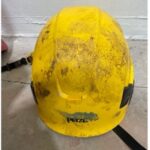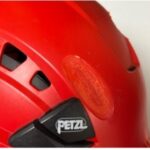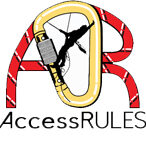Our helmets are one of the most important things we use every day at work. They provide protection against falling objects, top impact protection, resistance to lateral deformation, and in many cases, protection from molten metal splash and protection against accidental contact with live conductors.
Unfortunately, we often take our helmets for granted. Stickers are cool, but they don’t belong on a helmet. Dirt and grime tell everyone around us how hard we work. Chinstraps look cooler if they are stored in that little slot above the ears. And who doesn’t like the old school turtle shells? Way cooler than the ones that are around today. Makes me look experienced. Don’t even get me started on the way we store these things. There are some simple things we can do to ensure our helmet provides the significant risk reduction we need at the worksite.
Your helmet must fit right. Most helmets have knobs or dials which adjust the harness to fit your mug. Use them. A helmet should not fit your head like the bowl your mom used to cut your hair. If the adjustment isn’t right or does not work, get a new one.

So, you spent the day in the south Texas sun. Or Louisiana, or wherever. Sweat is covering your body. Your coveralls, your harness and your helmet are soaked. What do you do? Throw the helmet and the harness in a bag and store it in the back of a truck. The next day, your PPE is still damp. Double gross. Give your helmet and harness time to dry out. Plenty of ventilation away from direct sunlight should work.

Your helmet must be clean. I know technicians who have not cleaned their helmet. Ever. Gross. Dude, you’re walking around with a science project on your head. Then, you take the chemicals and bacteria home to share with your family. Clean the helmet with water and a mild face/body soap. Clean the suspension harness, too. Replace the head liner when your helmet starts to smell like a goat. If your helmet smells like a goat, you do, too! Avoid any product that is harmful to the helmet, or to the wearer of the helmet.
Give your helmet the once over before you use it. Check the adjustment features, the shell and the suspension harness. While you’re checking out the chinstrap, go ahead and make sure the chinstrap strength setting is set correctly for the type of work you’re planning on doing. The weaker setting is generally used on the ground and the stronger setting is for suspended work.
A helmet which bears the type 1 class E rating will provide protection against low voltage electrical contact. These things are tested at ridiculously high voltages but that does not mean you can go leaning into live electrical panels. You’ll need other protective equipment that will insulate you from the electricity.

Speaking of extremes, most helmets are designed to provide protection from -30° C to +50° C temperatures. Don’t expose your helmet to temperatures outside of this range. For those of you who are not familiar with Celsius measurements, that’s -22° F to 122° F. The inside of your vehicle can get to 150° F in a few hours.
We’ve already learned that helmets do better in well-ventilated areas away from direct sunlight and extreme temperatures. Do not expose your helmet to compressive forces such as flexing in the sides, sitting on it, or storing a bunch of them in a Home Depot bucket with a lid.

Use the accessory slots for their intended purpose. They are there to secure headlamps, earmuffs and other accessories designed for user convenience. Think about this for a minute. What are you doing to the buckle and the slot each time you store the strap there? Over time you’ll risk breaking the slot, or more often, you’ll break the buckle.
These short tips will help you maintain your helmet through the manufacturer’s stated lifespan. Most helmets are effective for up to 10 years. Check the documentation that came with your helmet. What’s that? Your employer didn’t give you the papers? Go to the manufacturer’s web site and look it up. Don’t forget that you need a competent inspector to conduct a thorough inspection in accordance with the manufacturer’s instructions. Your employer has a policy for this, so follow it. Let us know if you need a new helmet, replacement headbands, or accessories. We’re glad to help.

